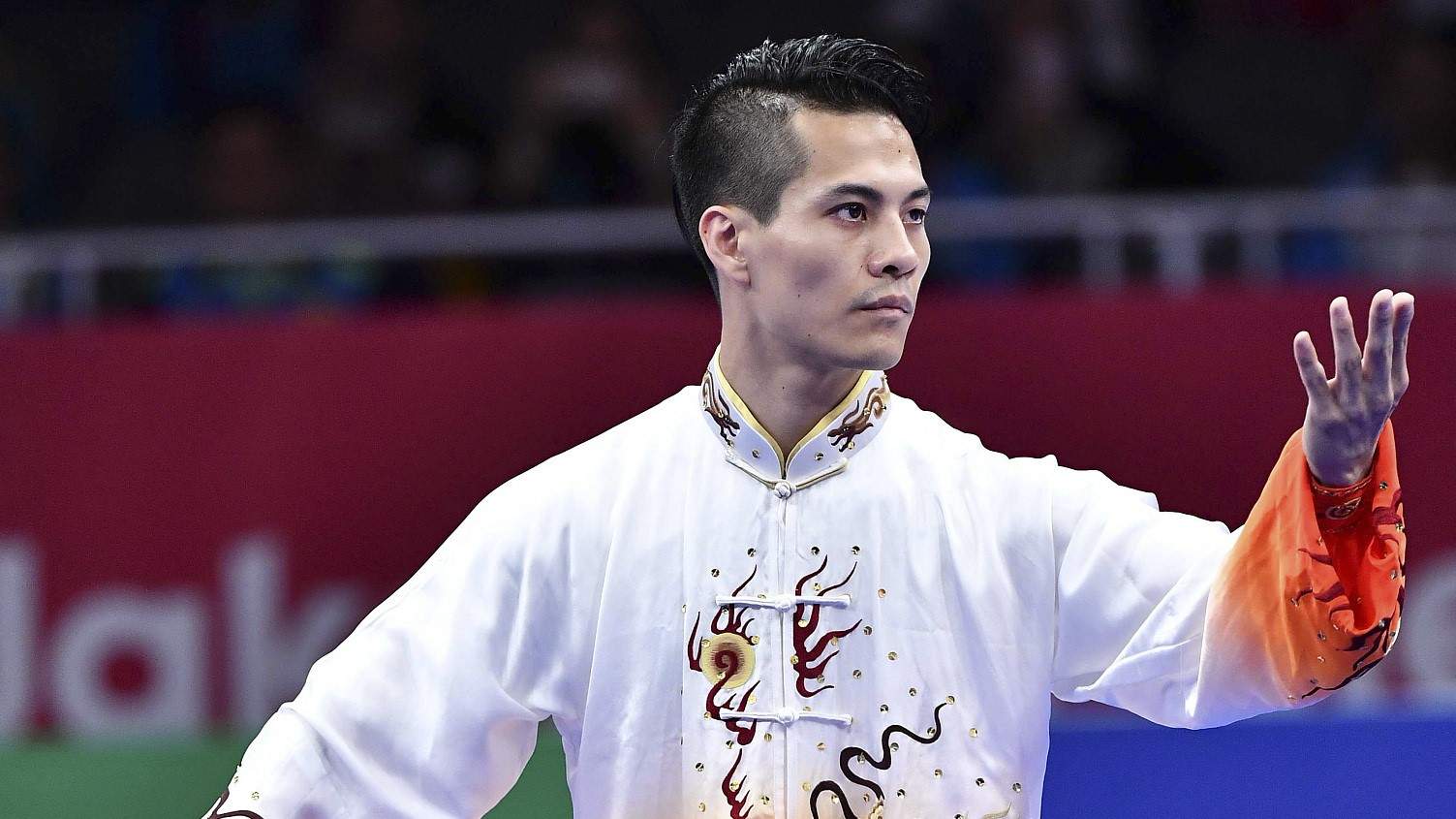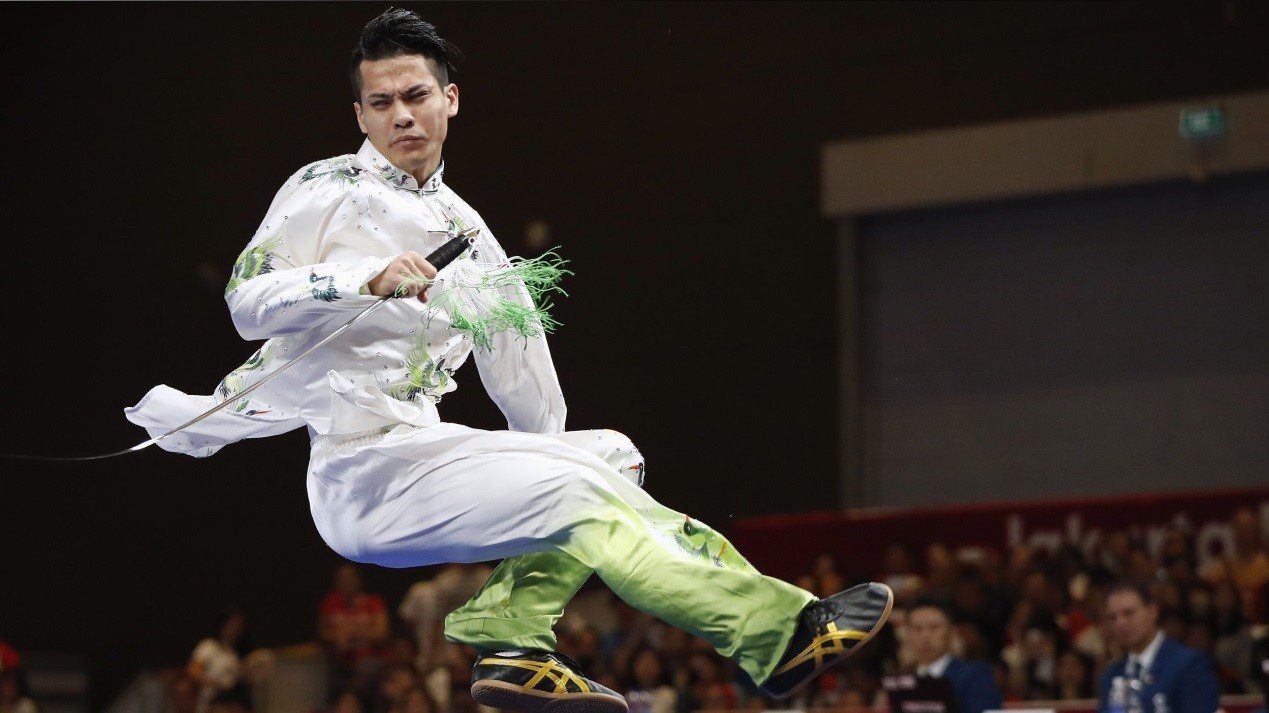
Sports
15:52, 23-Aug-2018
2018 Asian Games: An introduction to Taijiquan and Taijijian
Updated
15:46, 26-Aug-2018
Sports Scene
01:27

We continue with our introductions to Wushu and its different forms of competition at the ongoing Asian Games in Jakarta. Today, CGTN’s Sports Scene has chosen two of the disciplines of sport: Taijiquan and Taijijian.
Taijiquan is an internal Chinese martial art, practiced both for its defense training and health benefits. The term of Taiji refers to a Chinese philosophy of the forces of Yin and Yang, which are related to the moves.

Chen Zhouli of China competes In men's Taijiquan in Jakarta. /VCG Photo
Chen Zhouli of China competes In men's Taijiquan in Jakarta. /VCG Photo
The training forms of Taijiquan are famous for their slow movements which involve two primary features. One of those, which is commonly seen in competitions, is taolu, also known as the "solo form", which consist of a slow sequence of movements that emphasize a straight spine, strong breathing techniques and a natural range of motion.
Taijiquan can be performed with an empty-hand, and also with weapons. The version which uses the jian – a straight double-edged sword – is called a Taijijian.

China's Chen Zhouli competes in men's Taijijian in Jakarta. /VCG Photo
China's Chen Zhouli competes in men's Taijijian in Jakarta. /VCG Photo
Taijiquan & Taijijian were first included in competition in the 1990 Beijing Asian Games, with the "Combined 42 Forms" being chosen to represent the sport. The routine in a competition should be completed to a single standard, as the person who finishes better will receive a higher score.
China's Chen Zhouli defended his title in the Taijiquan and Taijijian all round event of the Games yesterday. He already won a Grand Slam title when he grabbed the gold in China's National Games last August.

SITEMAP
Copyright © 2018 CGTN. Beijing ICP prepared NO.16065310-3
Copyright © 2018 CGTN. Beijing ICP prepared NO.16065310-3